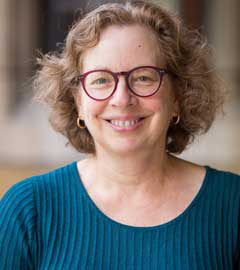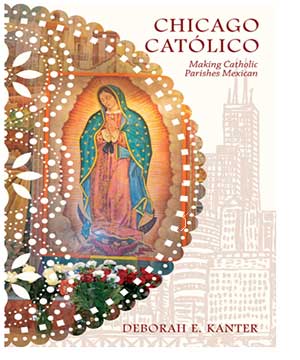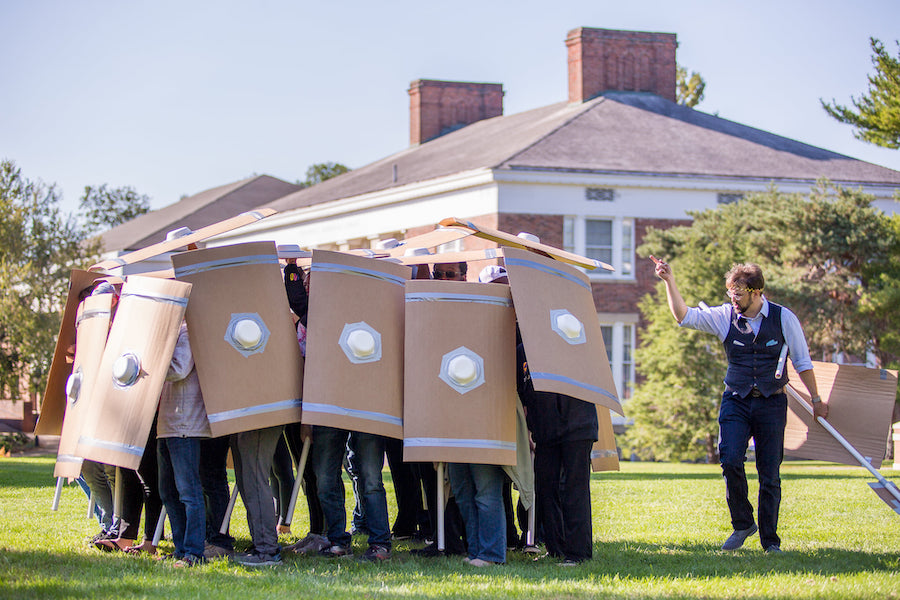In New Book, History’s Deborah Kanter Examines Mexican Catholics in Chicago
Related Programs
Related Posts
Connect With Us
The professor has spent 20 years traveling and researching the evolution of the Catholic Church in her hometown, and hopes what she has found will inform and enlighten a diverse crowd.
February 7, 2020
By Chuck Carlson

Albion College history professor Deborah Kanter has spent two decades researching and writing her book Chicago Católico: Making Catholic Parishes Mexican.
When Deborah Kanter, the John S. Ludington endowed professor of history and department chair, set out to complete her 20-year journey to chronicle Mexican Catholic parishes in Chicago, her goal was simple.
“I wanted to write a book that friends could give their moms for Christmas,” she said. “I wanted to write a book for the general public. I wanted to tell stories. I wanted to stay away from academic jargon.”
And so she created Chicago Católico: Making Catholic Parishes Mexican, a book with its share of maps, charts and photos, and more importantly, a book full of stories about the unique evolution and relationship between Chicago and the Mexican Catholic community.
“The future of Catholicism is the Latino community,” she said. “This is part of a larger story of the United States.”
The project has taken Kanter to her native Chicago (she grew up in Oak Park) time and again as well as camping out in the archives of the Archdioceses of Chicago and Los Angeles to universities to historical societies around the region.
And she talked to a lot of people in all sorts of settings. She was invited to attend reunions and weddings and funerals and parties of many Latinos with ties to both Mexico and Chicago Catholicism. A volleyball team held a reunion and invited her.
“I’d get a call and be invited,” she said.
She even went to Monterrey, Mexico, in 2004 to attend the vast Luna family reunion that featured not only Mexican relatives but those from Chicago.
“I had to go to Mexico to hear more stories about Chicago,” she recalled with a laugh.
But it was all illuminating for Kanter, who started the journey while walking into the St. Agnes of Bohemia Church in the predominantly Latino Little Village in Chicago, and she noticed Czech names in the stained glass windows.

The cover of Kanter’s book, published and released February 2020 by the University of Illinois Press.
“And I wondered what it was like to be the first Mexican to go into that church,” she said.
From there, her curiosity took off.
After years of research (her book contains nearly 50 pages of notes, a bibliography and a glossary), she was ready to write about the remaking of the Chicago Catholic Church through the growing Mexican community.
Realizing the daunting size of the project, she concentrated her efforts on two Mexican majority neighborhoods that straddle each other, Pilsen and the Near West Side. She would write in her spare time, on vacation and during her most recent sabbatical three years ago.
Now it’s finished and ready for what she hopes will be an educational experience for a diverse, curious audience.
“It was an accomplishment but I wanted to give back to Chicago and the people who live there,” Kanter said. “I feel I managed to get voices from a lot of different perspectives.”
And the journey has taught her a lot as well.
“I realize now that the Midwest has had a Mexican community for a century,” she said. “Before my research, I don’t think I understood the generational differences in the Mexican community. In every generation, there’s a divide to the point where some of them call themselves Chicagoans before calling themselves Mexican. I just want readers to understand Mexican people are more than immigrants.”
Kanter also has been able to bring into the classroom a lot of her research that didn’t make it into the book.
“In 2005 I started teaching a class called Mexican-American History,” she recalled. “And it was a small class, maybe nine students with one Latino student. But with Albion’s focus on diversity, the last two times I’ve taught the class I’ve reached the cap of 25 students and half of them are Latino. The course isn’t a requirement but students of all backgrounds are taking it because they’re interested. And that’s very moving.”
